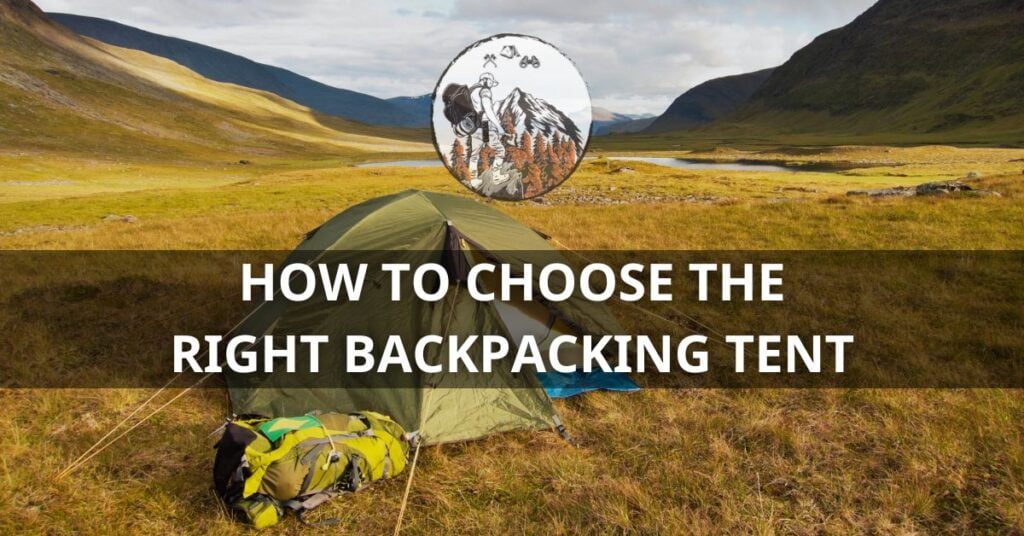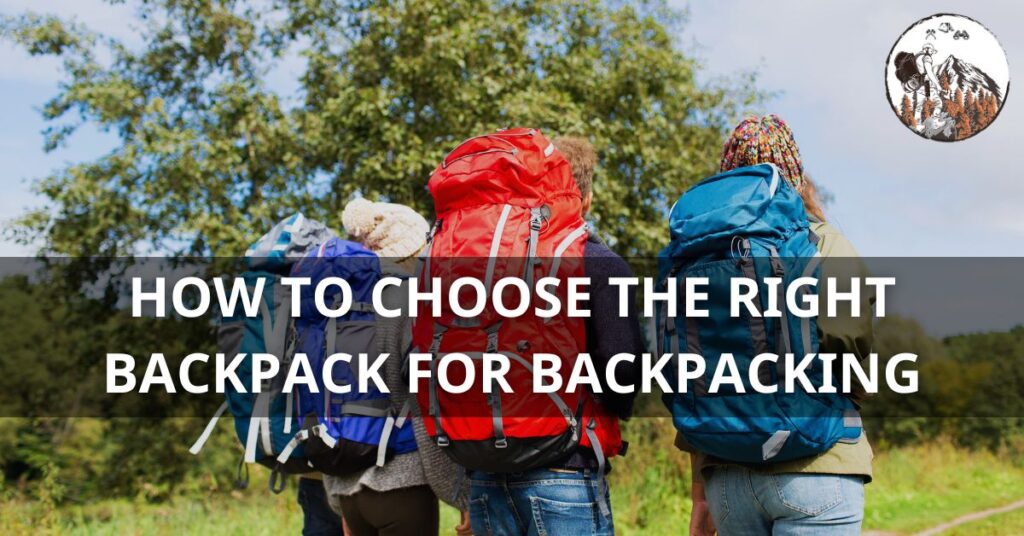Backpacking is an exhilarating pursuit that allows us to reconnect with nature, explore new landscapes, and challenge our physical and mental frontiers. But the thrill of the trail also comes with its own set of challenges, particularly when it comes to maintaining personal hygiene.
Whether you’re a seasoned hiker or preparing for your first outdoor adventure, ensuring that you stay clean and healthy on the trail is crucial, not only for your comfort but also for the well-being of the environment and those around you.
In this extensive guide, we will explore the multifaceted world of backpacking hygiene, presenting comprehensive tips and strategies for every step of your outdoor journey.
From preparing for the trip to navigating personal hygiene practices on the trail, we’ve got you covered with expert advice that will help you turn every backpacking trip into a clean, safe, and enjoyable adventure.
Table of Contents
Introduction to Backpacking Hygiene
Backpacking hygiene is not just about maintaining cleanliness; it’s a key component of responsible backcountry travel. Poor hygiene practices can lead to illness, discomfort, and environmental contamination.
By learning the essential tips for personal and environmental care, you’re not only safeguarding your health but also ensuring that the pristine wilderness remains as such for all to enjoy.
Understanding the Importance of Hygiene in Backpacking
When you’re miles away from the closest shower, maintaining hygiene can seem like a secondary concern. However, proper hygiene is integral to avoiding illnesses such as gastrointestinal infections, skin rashes, and fungal conditions, which can quickly turn an exciting trip into a miserable experience.
The importance of hygiene extends beyond personal health. Proper waste disposal practices and water purification help protect the environment and minimize your impact on the ecosystem.
Benefits of Maintaining Hygiene While Backpacking
The benefits of cleanliness on the trail are numerous. Clean practices can:
- Prevent the spread of illness within your group
- Boost your mental well-being, as feeling clean and refreshed can uplift your spirits
- Aid in social interactions with other hikers and locals
- Maintain the sanctity of the natural environment
With these benefits in mind, it’s clear that integrating good hygiene into your backpacking routine is not just advisable – it’s imperative.

Preparing for the Journey
Preparation is the foundation of a successful backcountry experience. Before hitting the trail, there are key steps you should take to ensure that your hygiene pack is as effective as your gear and provisions.
Packing Essential Hygiene Items
Your pack list should include the following hygiene items:
- Clothing and Footwear: Choose moisture-wicking and quick-drying fabrics to stay comfortable and prevent chafing. Sturdy, broken-in hiking boots are essential for foot protection.
- Personal Hygiene Products: Pack travel-sized biodegradable soap, toothpaste, a toothbrush, and any necessary medication.
- First Aid Kit Essentials: Include items for cleaning, dressing wounds, and treating common ailments.
Ensure you’ve packed all necessary items and that they are lightweight and space-saving.
Researching Hygiene Facilities Along the Route
Understanding the availability of facilities such as restrooms and water sources can guide your packing decisions. If facilities are limited, plan to avoid inconveniences or compromising your hygiene standards.
Personal Hygiene Practices on the Trail
Maintaining personal hygiene in the backcountry doesn’t have to be complicated. By developing a simple daily routine, you can stay clean and healthy throughout your trek.
Daily Hygiene Routine
A daily hygiene routine should address the following:
- Washing Hands and Body: Frequent handwashing before meals and after using the restroom is crucial. For bathing, a dip in a stream or a sponge bath with soapy water is effective.
- Oral Hygiene: Brush your teeth at least twice a day, using as little water and environmentally-friendly toothpaste as possible.
Develop a routine that fits your personal preferences and the conditions of your trip.
Managing Menstrual Hygiene
Female backpackers should be prepared to manage menstrual hygiene discreetly and hygienically.
- Options for Female Backpackers: Choose from various products, such as tampons, menstrual cups, or eco-friendly pads.
- Proper Disposal Techniques: Ensure you’re familiar with ‘pack it in, pack it out’ principles for waste disposal.
Disposing of menstrual waste in a sanitary and responsible manner is particularly important in the backcountry.
Dealing with Sweat and Body Odor
Body odor is a natural part of backpacking, but managing it appropriately will enhance your experience and relationships with fellow backpackers.
- Choosing the Right Clothing Materials: Moisture-wicking fabrics can help control odor and prevent chafing.
- Using Antiperspirants and Deodorants: Select products that are effective and safe for the environment.
Carrying a travel-size deodorant and using it sparingly can make a significant difference.

Water and Food Safety
Contaminated water and food are common sources of illness for backpackers. Mastering the art of water purification and food preparation is essential to preventing sickness.
Purifying Water Sources
Always assume natural water sources are contaminated. Use one of these reliable methods to purify water:
- Water Filtration Systems: Portable filters remove bacteria and protozoa from water.
- Boiling Techniques: Boil water for at least 1 minute (3 minutes at elevations above 6,000 feet) to kill pathogens.
Practicing water purification methods diligently can prevent waterborne diseases.
Proper Food Handling and Storage
Improperly stored or handled food can lead to food poisoning. Follow these guidelines to maintain food safety:
- Storing Food to Avoid Contamination: Keep food in sealed containers or bear-proof bags to prevent wildlife encounters and spoilage.
- Cooking Safety Tips: Bring food to the appropriate temperature to kill bacteria and cook food thoroughly, especially meats and eggs.
Adhering to food safety measures is vital, especially if you’re consuming raw foods like unpasteurized milk, fresh fruits, or vegetables.
Bathroom Etiquette and Waste Disposal
Backcountry bathrooms aren’t as straightforward as public restrooms. Understanding how to properly dispose of waste is critical to maintaining the cleanliness and safety of the trail.
Digging Proper Cat Holes
When nature calls, using a cat hole is an appropriate method for waste disposal. A cat hole should be dug at least 6 to 8 inches deep and 200 feet away from water sources.
- Carrying and Disposing of Waste: Use a small trowel to dig the hole, and bury the waste properly.
- Pack It Out Principles: In sensitive environments where burying waste is not an option, pack it in a sealed container.
Adhering to bathroom etiquette minimizes environmental impact and respects fellow backpackers.
Maintaining Clean Gear and Equipment
Your gear and equipment are vital to your safety and comfort on the trail. Keeping them clean and in good condition ensures they can provide the protection you need.
Cleaning and Sanitizing Cooking Utensils
After preparing meals, clean your cooking utensils thoroughly with biodegradable soap and water. This prevents the buildup of bacteria.
Washing and Drying Clothing on the Trail
Regularly washing and drying your clothes prevents skin issues and reduces odors. Use natural aids like sunlight and wind for drying whenever possible.
Skin and Foot Care
Your skin is your largest organ and deserves special attention while backpacking. Proper skin and foot care are essential for avoiding discomfort and infections.
Preventing Blisters and Chafing
Blisters and chafing can turn a hike into a painful ordeal. Take preventive measures:
- Proper Footwear Selection: Ensure your shoes fit well and are broken in before the trip.
- Using Foot Powders and Lubricants: Apply these products to reduce friction.
A proactive approach can prevent minor irritations from escalating into major issues.
Protecting Skin from Sunburn and Insect Bites
Outdoor conditions can be harsh on the skin. Protect yourself from the sun and insects by:
- Applying Sunscreen and Insect Repellent: Use a broad-spectrum sunscreen with an SPF of at least 30 and an insect repellent that contains DEET or picaridin.
Consistent application of these products can prevent painful sunburns and itchy bites.
Environmental Considerations
Backpacking hygiene extends beyond personal care to include the environment as a whole. Practicing good environmental hygiene means minimizing your impact on the natural world.
Using Biodegradable Hygiene Products
Biodegradable soaps and detergents break down naturally, reducing the impact on water sources and aquatic life.
Minimizing Impact on Natural Resources
Use water sparingly and avoid introducing soaps and cleaning products directly into water sources. Choose eco-friendly products whenever possible to minimize pollution.
Hygiene in Group Settings
When backpacking with a group, it’s important to be considerate of others and maintain a level of personal hygiene that respects shared living spaces and resources.
Communicating Hygiene Expectations
Discuss hygiene expectations with your group before the trip to ensure everyone is on the same page.
Sharing Responsibilities for Camp Cleanup
Delegate tasks for keeping your camp clean and organized. Simple chores like dishwashing and waste disposal can be shared to lighten everyone’s load.

Emergency Hygiene Situations
Despite your best efforts, emergencies can happen. Being prepared for these scenarios can be the difference between a minor inconvenience and a serious issue.
Dealing with Illness or Injury on the Trail
If you or a member of your group becomes ill or injured, it’s important to manage the situation while maintaining hygiene standards. Your first aid kit and emergency hygiene items should be easily accessible.
Emergency Hygiene Kit Essentials
Your emergency hygiene kit should include items for:
- Controlling Bleeding: Antiseptic wipes and bandages for wound care.
- Managing Stomach Issues: Anti-diarrheal medications and oral rehydration salts.
Having these essentials on hand prepares you for any hygiene-related emergencies.
Cultural Sensitivity and Respect
When backpacking in different regions, it’s important to be mindful of local customs and traditions regarding hygiene. Respecting cultural norms shows consideration and fosters positive interactions with the local community.
Respecting Local Customs and Traditions
Educate yourself on the hygiene practices of the area you’re visiting. Be prepared to adapt your routine to align with local norms.
Proper Etiquette When Using Public Facilities
When using public facilities, observe cleanliness practices and leave the area as you find it. Your actions reflect the collective reputation of backpackers in the region.
Mental Health and Hygiene
The relationship between hygiene and mental health is often overlooked. In the backcountry, maintaining a sense of cleanliness can positively impact your overall well-being.
Importance of Hygiene for Mental Well-being
A clean and orderly camp can be a source of comfort and psychological relief. Feeling clean and organized in the wilderness can help reduce stress and enhance your enjoyment of the outdoors.
Coping Strategies for Hygiene Challenges on the Trail
If you struggle with maintaining hygiene standards, identify coping strategies that work for you. These might include setting realistic goals for personal cleanliness or introducing small rituals that boost your morale.
Hygiene and Wildlife Interaction
An important aspect of outdoor ethics is minimizing your impact on wildlife. Unhygienic practices can attract animals and disrupt their natural behaviors.
Minimizing Attraction to Wildlife
Keep food and waste properly stored to prevent attracting animals to your camp. Avoid disposing of food scraps in areas where wild animals can retrieve them.
Safety Precautions Around Animals
Be aware of animal behavior and take necessary precautions, such as storing food away from your sleeping area.
Technology and Hygiene
Technology can play a significant role in maintaining hygiene on the trail. Utilize apps and gadgets that enable efficient cleaning and waste management.
Utilizing Hygiene Apps and Tools
There are various apps available that can help you find the nearest restroom or water source. Packing lightweight, portable tools like a solar shower can make personal cleanups easier.
Portable Hygiene Gadgets for Backpackers
Consider including lightweight, multi-functional gadgets in your pack, such as portable bidets or compact towels that expand with water.
Budget-Friendly Hygiene Hacks
Not everyone can afford high-end hygiene products. Fortunately, numerous cost-effective alternatives can keep you clean and comfortable on a budget.
DIY Hygiene Solutions
Home-made products like hand sanitizer or simple shower kits can be as effective as store-bought ones.
Affordable Alternatives to Commercial Products
Look for generic or off-brand options that offer the same quality at a lower price.
Hygiene Tips for Specific Terrain
Different terrains present varied challenges for maintaining hygiene. From desert trails to tropical rainforests, understanding the unique needs of each environment is crucial.
Hygiene Challenges in Desert Environments
Deserts pose specific issues like sand, heat, and limited water sources. Strategies for conservation and use of available water are paramount.
Maintaining Hygiene in Humid and Tropical Climates
High humidity can exacerbate hygiene concerns such as mold growth on clothing. Regular airing and drying are key to preventing this.
Hygiene During Seasonal Changes
Your hygiene approach should adapt to the changing seasons. Winter brings unique challenges; in summer, it’s all about staying cool and dry.
Winter Hygiene Essentials
Focus on keeping your extremities warm and dry to prevent frostbite and chilblains. Keep spare clothing layers dry and accessible.
Summer Hygiene Precautions
Hydration and heat management become central. Protect yourself from sunburn and maintain hygiene to avoid heat-related illnesses.
Conclusion: Embark on Clean and Healthy Adventures
A fresh-scented, sun-kissed, and sweat-less adventure awaits when you apply the knowledge and strategies presented in this guide. Backpacking hygiene is a skill that evolves with each hike, fostering self-reliance and a deep respect for the environment. By taking these tips to heart, you’re not just preparing for a safe and healthy adventure – you’re embodying the spirit of a responsible backpacker.
Stay committed to your quest for outdoor cleanliness. As you do, you’ll find that even the most rugged and remote corners of the earth shine a little brighter when you leave them as you found them – or better – when you leave them cleaner than you found them.
Each insight and implementation leads to a richer experience. Equip yourself with the knowledge embedded in this guide and set off on your next adventure with the confidence that you can conquer any path, hygienically.
Thank you for taking the time to read through our insights. Your engagement and curiosity are what inspire us to continue sharing valuable content. If you like our content please share it with your friends and spread the informative and valuable guides & tips.
FAQs
How often should I wash my hands while backpacking?
You should wash your hands regularly, especially after using the restroom and before preparing or eating food. If soap and water are scarce, use hand sanitizer that contains at least 60% alcohol.
What should I do if I run out of hygiene products on the trail?
Plan and pack multi-use items like castile soap that can serve as a body wash, shampoo, or detergent. In emergencies, improvise with natural substances like pine needles for a freshener.
How do I handle hygiene emergencies in the wilderness?
Stay calm and assess the situation. Your emergency hygiene kit should contain the essentials to manage most crises. Be resourceful and creative in finding solutions.
What’s the best way to handle feminine hygiene while backpacking?
Consider using menstrual cups or period-proof underwear for environmentally friendly options. If using disposable products, pack them out in sealable bags. Practice Leave No Trace principles.
What should I do about waste disposal while backpacking?
Always follow Leave No Trace principles. Bury human waste in a cat hole at least 200 feet away from water sources and campsites. Pack out used toilet paper in sealable bags. For feminine hygiene products, dispose of them properly in designated waste containers or pack them out.
How do I keep my clothes clean on a backpacking trip?
Pack lightweight, quick-dry clothing that can be easily washed in sinks or streams. Carry a small supply of biodegradable soap and a portable clothesline for air-drying.



